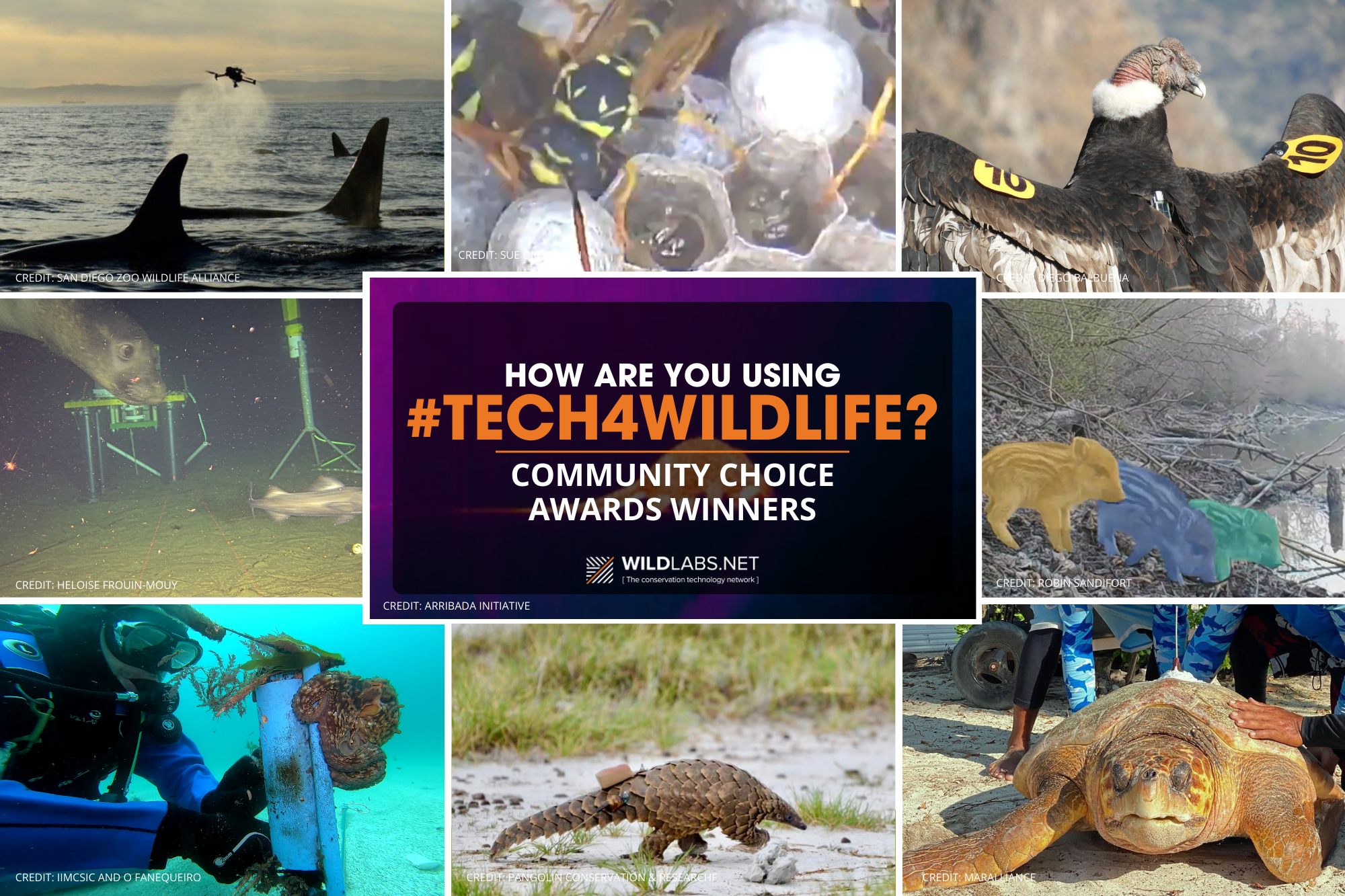
To finish off the 9th Annual #Tech4Wildlife Photo Challenge, we once again asked the community to help us select the most impactful, inspirational, and flat-out cool entries we received over the course of the week. Our Photo Challenge Honorees embody the ingenuity and advancement of the sector and shed a light on the revolutionary ways tech is shaping conservation.
This year’s challenge shaped up to be one for the books. We received nearly 100 submissions that celebrated the breakthrough ideas and projects at the forefront of conservation tech. Entries came in from all corners of the world and represented a diversity of ecosystems, species, and technology types.
When the polls opened on Monday, the community was eager to vote for their favorite submissions demonstrating conservation impact, novel innovation and discovery, and strong storytelling. Over the past three days, votes have poured in and the results are finally here.
Please join us in celebrating the 2024 Community Choice Award Honorees:
Photo
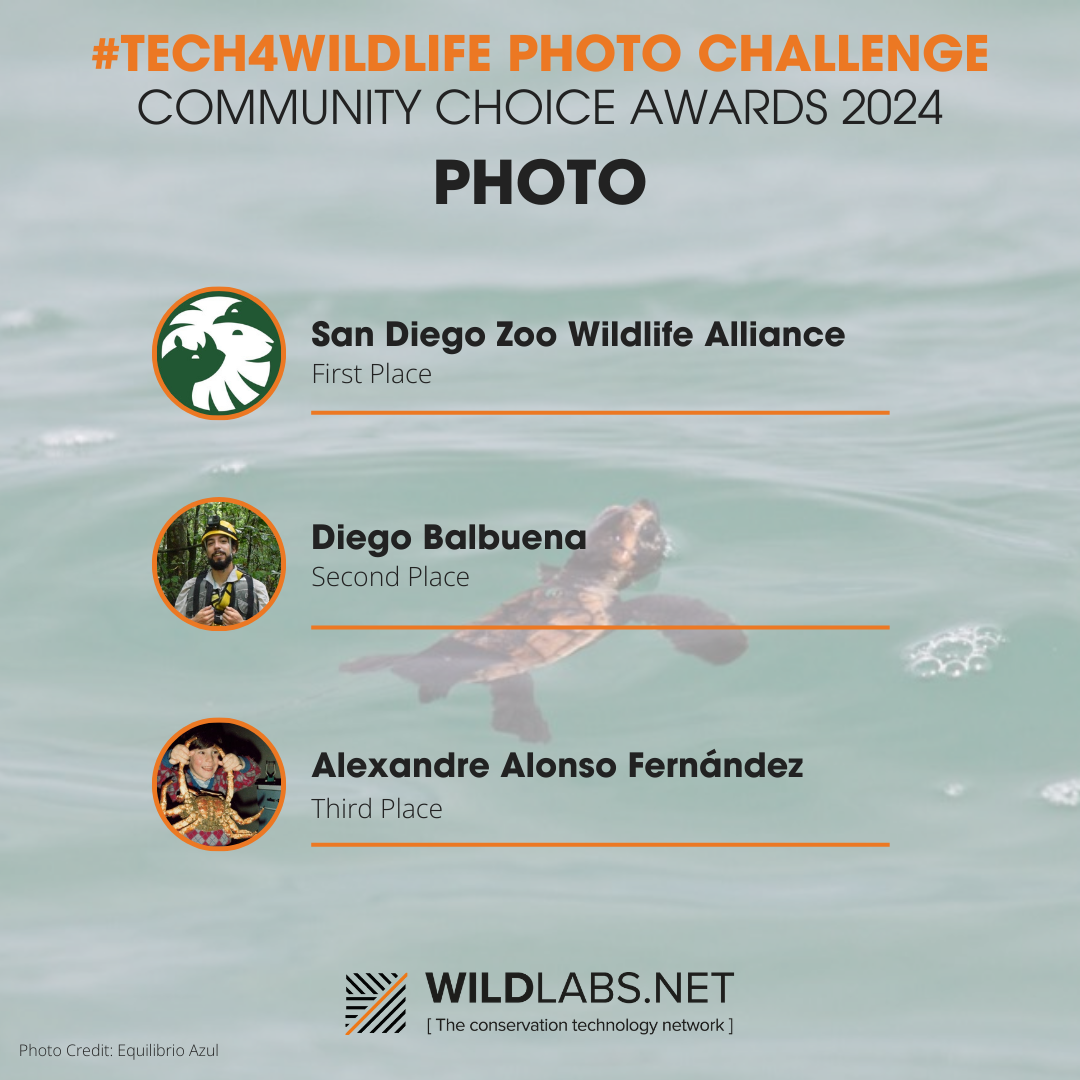
Our photo submissions captured moments of innovation and discovery. San Diego Zoo Wildlife Alliance (SDZWA) took first place with a stunning photo of a drone flying high above killer whales, reminding us how drones can gather data in seemingly inaccessible places. Our second-place honoree Diego Balbuena’s submission also demonstrated how tech can help monitor species by showcasing a small device to keep an eye on the reintroduction of rehabilitated Andean condors. Finally, our third-place honoree Alexandre Alonso Fernández took us under the sea using acoustic telemetry to study the movement and behavior of the common octopus.
First Place: San Diego Zoo Wildlife Alliance
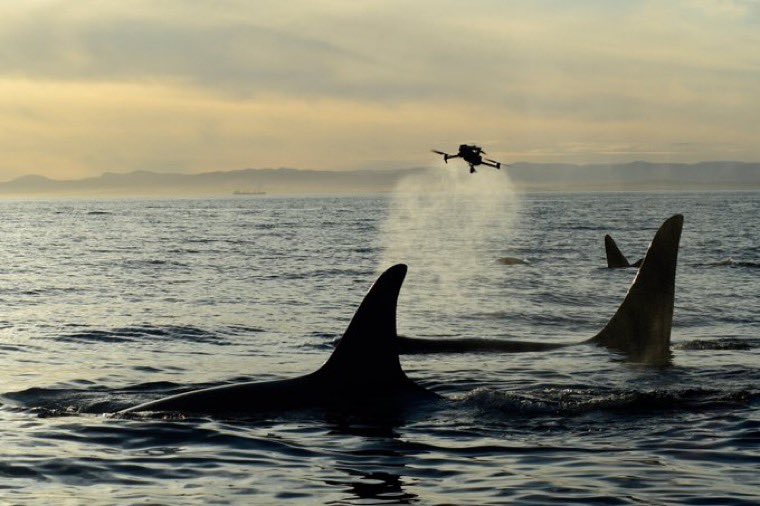
Second Place: Diego Balbuena
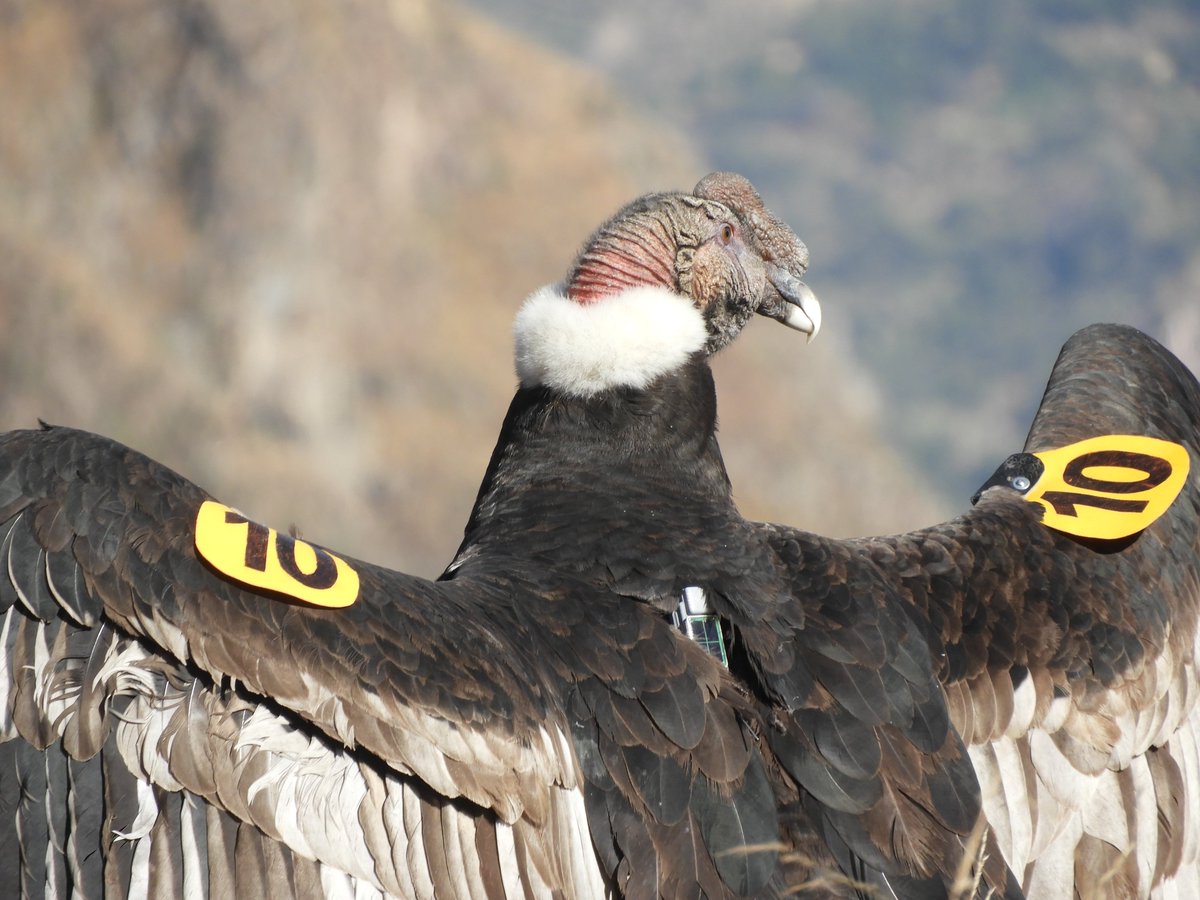
Third Place: Alexandre Alonso Fernández
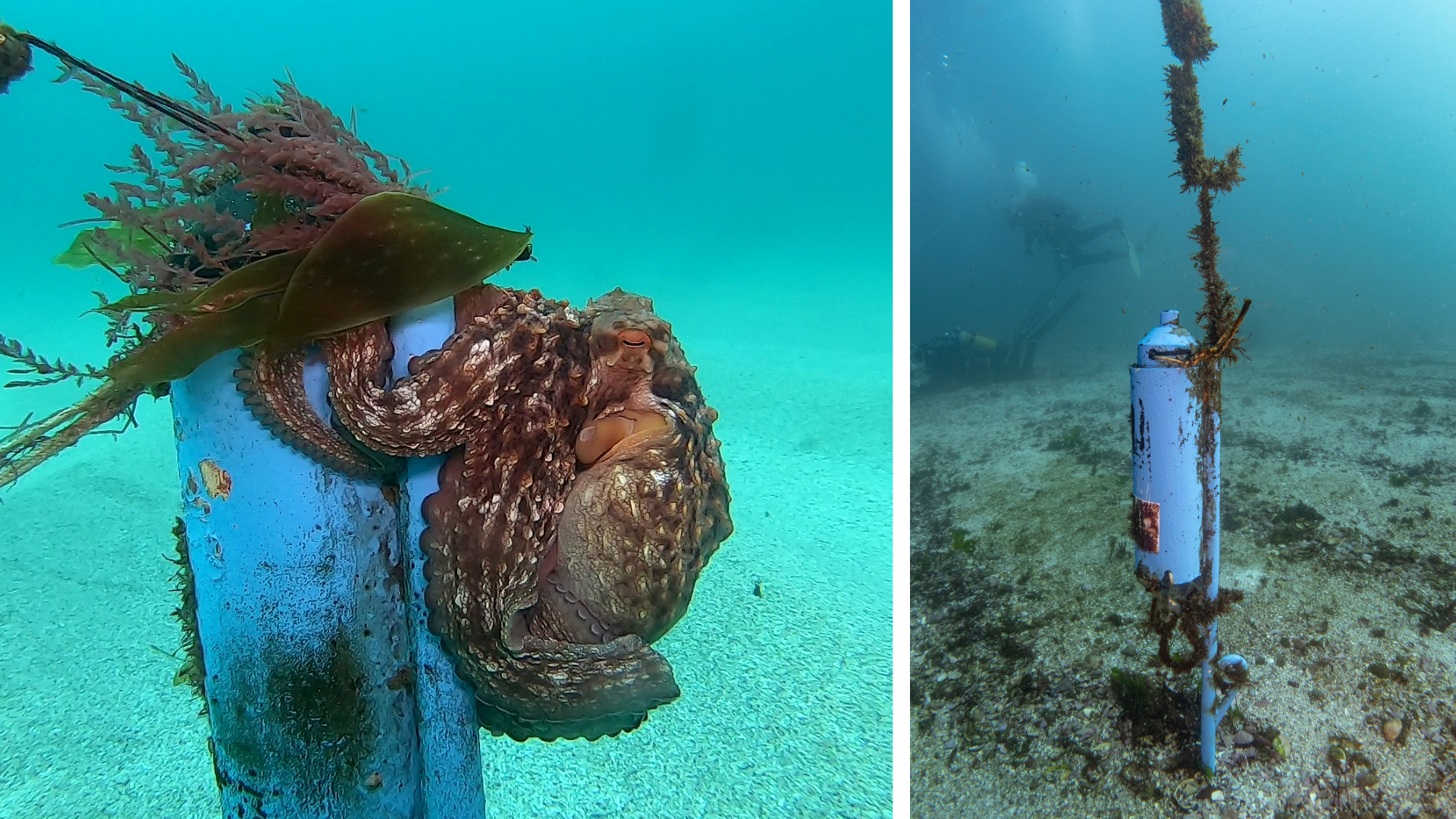
Video
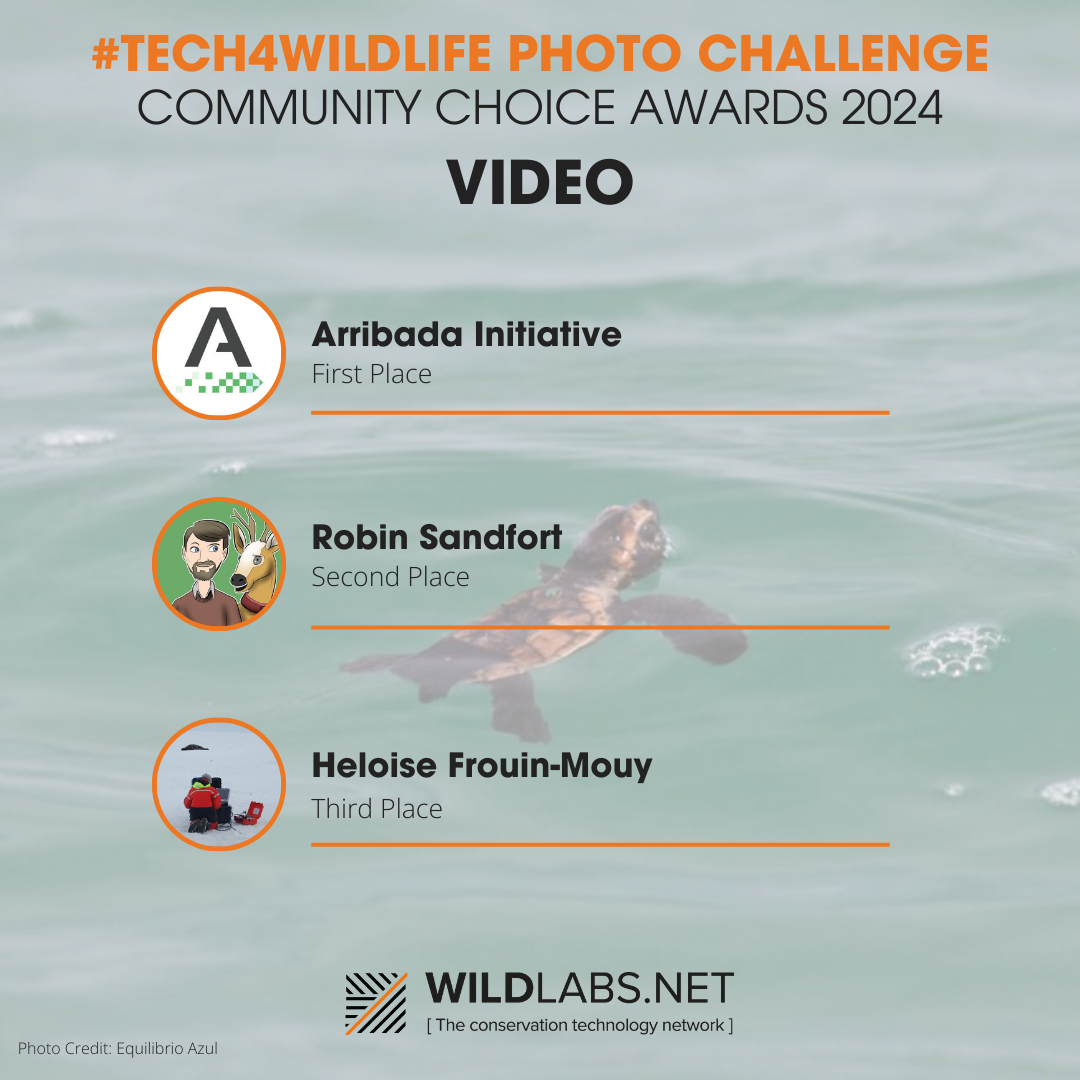
Our video submissions captured amazing footage showing conservation tech projects unfold right before our eyes. Our first-place honoree goes to the Arribada Initiative for detecting nocturnal activity of white-bellied pangolins with a not-so-average thermal camera trap. Robin Sandfort secured second place with a video of the Segment Anything Model 2 (SAM 2) in action, once again proving the community is excited to see new applications of AI. Our third-place honoree Heloise Frouin-Mouy’s acoustic imaging sonar and acoustic recorder aimed to investigate the resting and foraging strategies of northern elephant seals.
First Place: Arribada Initiative
Operation Pangolin is developing a thermal camera trap 🔥 to detect nocturnal activity of arboreal species, with this footage highlighting the detection of a white-bellied pangolin 👀 @PGAFamilyFdn @FIU @ZSLconservation @UniofOxford @UofMaryland @USC #Tech4Wildlife @WILDLABSNET pic.twitter.com/qCGE5mePMJ
— Arribada Initiative (@arribada_i) August 6, 2024
"Operation Pangolin is developing a thermal camera trap 🔥 to detect nocturnal activity of arboreal species, with this footage highlighting the detection of a white-bellied pangolin 👀
@PGAFamilyFdn @FIU @ZSLconservation @UniofOxford @UofMaryland @USC #Tech4Wildlife @WILDLABSNET."
Second Place: Robin Sandfort
Checking out camera trap images just got so much more colourful. 🐗🌈Meta just released its Segment Anything Model 2 (SAM 2) and it plays nicely with our wild boar piglets.@WILDLABSNET @AIatMeta #Tech4Wildlife #cameratrap pic.twitter.com/XN3xOU2kSm
— Robin Sandfort (@RobinSandfort) August 5, 2024
Third Place: Heloise Frouin-Mouy
Our #Tech4Wildlife project in BC uses a combination of high-definition video, acoustic imaging sonar, and acoustic recorder from a deep-sea cabled video-observatory to unravel the resting and foraging strategies at depth of sub-adult northern elephant seals 🦭🐟💤 @WILDLABSNET pic.twitter.com/FecZKH6kFW
— Dr. Heloise Frouin-Mouy (@FrouinMouy) August 7, 2024
Photo/Video Story
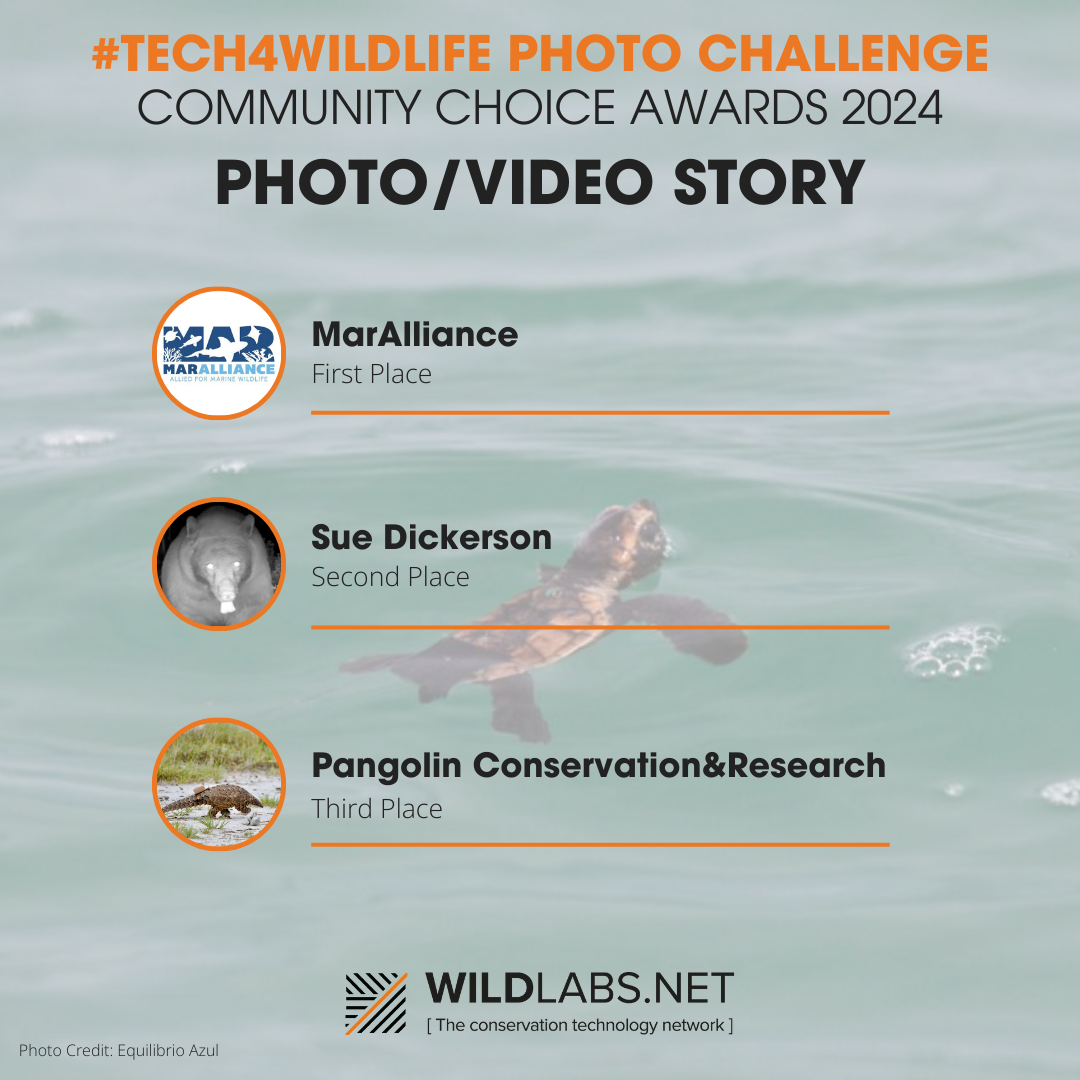
Our photo/video stories took us deeper into the narrative behind submissions and showed us what it takes to pull off conservation projects. MarAlliance’s story won first-place, capturing the community’s attention and taking us behind-the-scenes to track male sea turtle migration behaviors using satellite tags. Second-place honoree Sue Dickerson gave us a detailed look at European paper wasp behaviors, some of which give us insight into their life cycle and social interactions. Pangolin Conservation & Research took third place with a remarkable story of using camera traps and transmitters to protect pangolins, the world’s most trafficked mammal, and their habitats—all while keeping local communities at the forefront.
First Place: MarAlliance
289 likes, 5 comments - maralliance on August 5, 2024: "Why Monitoring Matters: A Crucial Step for Male Sea Turtle Conservation Did you know that most of our knowledge about sea turtles comes from studying females? This is because females return to land to nest, allowing researchers to observe, tag, and collect data. In contrast, males remain at sea for life, making them much harder to locate and study. Our research is focused on: 🌍 Spatial Ecology of Males: Rising sand temperatures due to climate change are leading to more female hatchlings, as the sex of sea turtles is determined by sand temperature. This shift in sex ratios could severely impact reproduction and long-term species survival. 🧭 Migration Mysteries: While female sea turtles are known for long-distance migrations, the movement patterns of males are still largely unknown. Do they migrate as far or as often as females? Understanding these behaviors is key to developing effective conservation strategies. How are we studying them? 📡 Satellite Tags: These tools are essential for tracking, providing detailed data on male sea turtle behavior and ecology. 📊 New Insights: After two years of tracking male loggerhead turtles in the MesoAmerican region, we are uncovering new movement patterns. These findings are critical for the conservation and management of sea turtle populations. 🌐 Curious about the sea turtles we tag? Check out our tracking page on the MarAlliance website for open access to real-time data and movements of tagged sea turtles. @wildlabsnet #Tech4Wildlife #SeaTurtles #MarineConservation #ClimateChange #OceanResearch #WildlifeConservation #MaleSeaTurtles #LoggerheadTurtles #SaveOurOceans #MarAlliance #MesoAmericanReef #Biodiversity #Ecology #EndangeredSpecies #MarineBiology #OceanLife #ProtectOurPlanet".
Second Place: Sue Dickerson
"I’ve been using a modified remote camera to answer questions I had regarding European paper wasps life cycle/nest building/social interactions. We’ve watched them add height to cells/dote on larva about to spin tops/molt/share food. #conservationtech. We were able to watch in an intimate way how the nest was constructed (until it got too large for the camera field of view). I plan on redesigning the lens assembly for 2025. I've been posting my videos/photos under #waspnest2024 I've answered many questions I had regarding the European paper wasps & hope to show how fascinating these wasps are. I am still filming the nest 12 hours a day. We now have Sooty Winged Chalcoela Moth larvae in the nest."
Third Place: Pangolin Conservation&Research
339 likes, 0 comments - pangolincrf on August 9, 2024: "We are proud to be at the forefront of #Tech4Wildlife, using technology to protect the world’s most trafficked mammal—pangolins—and their habitats. Through the Nyae Nyae Pangolin Project, we’re combining local knowledge with cutting-edge tools to protect these incredible creatures and support the communities that live alongside them. 🙌 🔗 By integrating camera traps, transmitters, and Pangolin Rangers, we’ve identified the Nyae Nyae Conservancy as a crucial stronghold for pangolins. While we keep specific numbers confidential for security reasons, we are currently monitoring many individuals to ensure their protection. 📊 The data we collect not only deepens our understanding of pangolin ecology but also helps develop vital guidelines and resources for the conservation community. Beyond pangolins, our camera traps have recorded rare species like serval, striped polecat, and brown hyena, and even bats roosting in pangolin burrows, contributing to the broader biodiversity conservation efforts in the area. 💼 Through this project, local communities benefit from income generation while playing an active role in protecting wildlife. We also offer internship opportunities for local students, fostering the next generation of conservation leaders. 🦸‍♂️ Together, with technology and community collaboration, it is truly an honour to be changing the future of conservation—one pangolin at a time! @WILDLABSNET #pangolincrf #pangolinconservation #savepangolins #research #pangolins #pangolinrescue #nature #conservation #community #animal #wildlife #endangeredspecies #animalsofinstagram #namibia".
Thank you to everyone who submitted to this year’s challenge and participated in the Community Choice Awards. We’ve had the best time learning more about your projects and helping highlight the incredible work of our community. We can’t wait to celebrate with you again next year!






Add the first post in this thread.